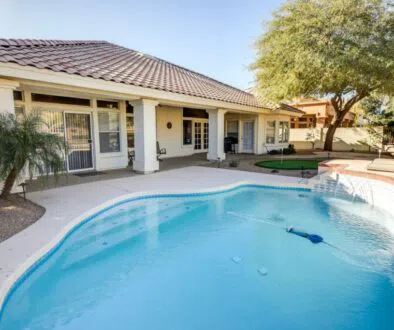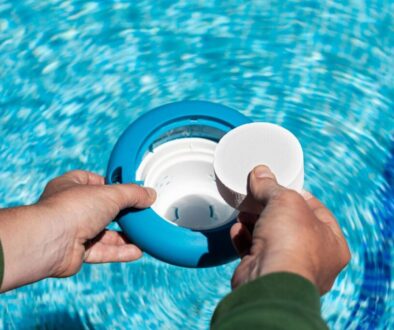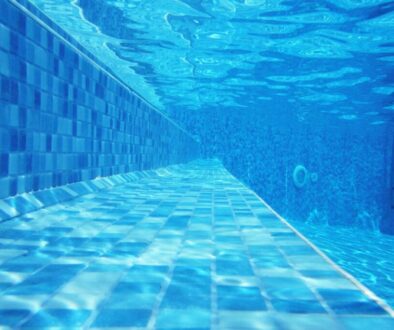Is It Safe to Put Chlorine Tablets in Skimmer Baskets?
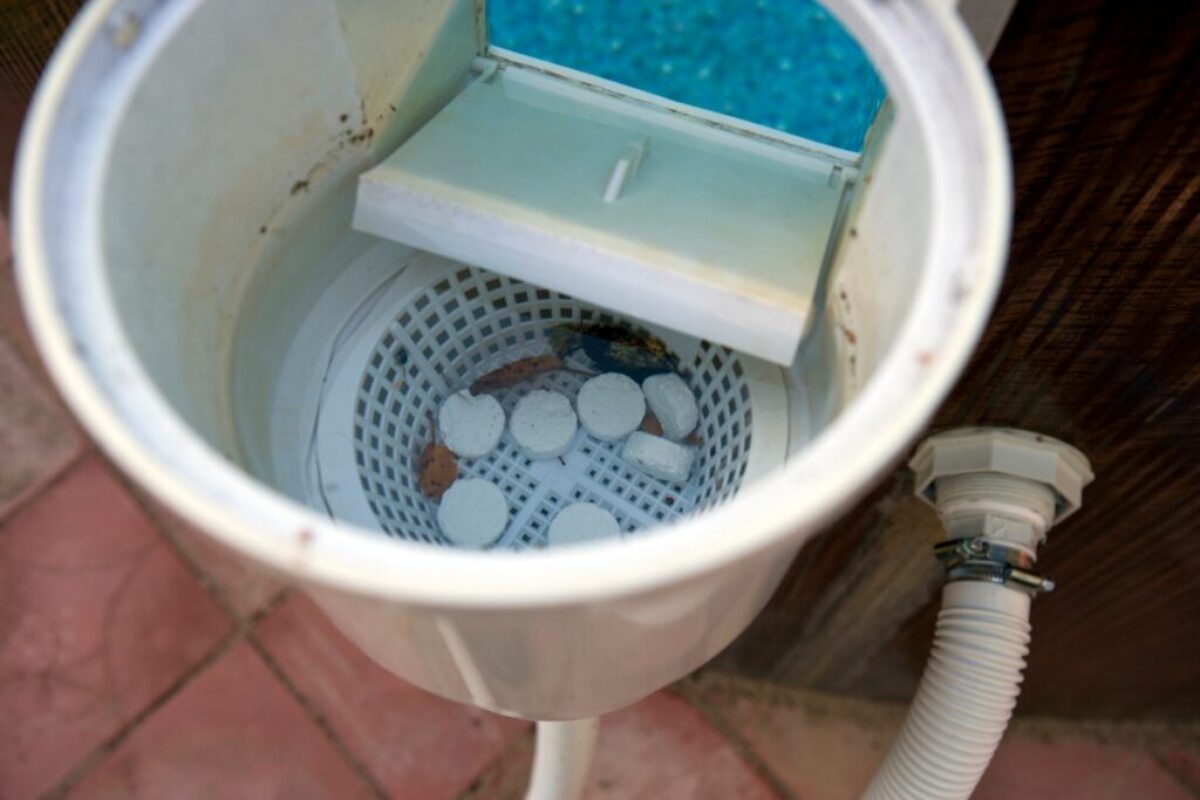
Published October 11, 2022
It’s not unusual for a pool to get dirty, especially when it’s been a while since the last cleanup. When that happens, pool owners often use chlorine tablets—a water disinfectant that can kill contaminants.
There are several ways to administer chlorine tablets to your pool water. One such method involves putting chlorine tablets in skimmer baskets. It’s a convenient method and takes less time and effort. However, there has long been a heated argument as to whether this particular method is safe or not.
Just like any debate, there are at least two sides. In this case, one side believes it’s safe to put chlorine tablets in skimmer baskets, whereas another side thinks it’s not. So, which side is correct?
To answer that question, you must first understand how each side came to its own conclusions.
Why Should You Put Chlorine Tablets In Your Skimmer Basket?
A skimmer is a rectangular opening built into the side of the pool. It’s responsible for eliminating debris like dirt and litter from the water surface before they sink all the way to the bottom of the pool.
It does its job by constantly sucking in water. When debris happens to pass by its vicinity, it gets sucked into the skimmer, and the weir or barrier prevents it from going back out. The basket then stores all the collected debris, which you can access easily later for disposal by popping off the lid.
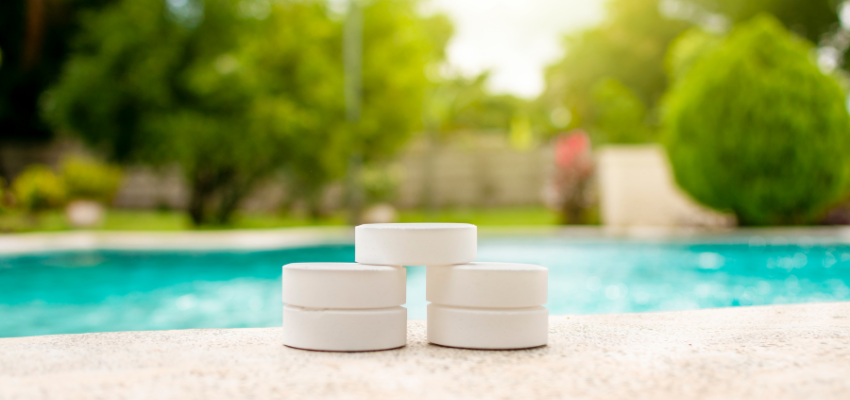
However, that’s not the most crucial part here.
Instead, it’s the skimmer’s ability to collect dirty water, move it into the filter tank, and put it back into the pool. That’s why placing chlorine tablets in the skimmer is done by many pool owners.
By putting the chlorine tablets into the basket, the constantly flowing water makes it easier to dissolve than when you simply leave it floating in the pool. As a result, a 200-gram chlorine tablet that usually takes five to seven days to dissolve can dissolve within 48 hours or two days.
Moreover, you don’t have to worry about anything else after putting the chlorine tablets in skimmer baskets. The now-chlorinated water should move to the filter tank, then right back to the pool.
Put simply, it’s a reasonably convenient method. So, why do some pool owners not like this method?
Why Shouldn’t You Put Chlorine Tablets In Your Skimmer Basket?
To start with, you must understand that chlorine, in combination with water, turns into a corrosive and harsh acid and oxidizer. That means it can damage materials like plastic, metal, and rubber.
However, it’s only ever harmful if there’s a high chlorine concentration.
That’s why when administering chlorine to a pool, experts suggest distributing it equally. Otherwise, the surfaces in areas with particularly high concentrations of chlorine may get bleached or damaged.
That’s the main reason why some pool owners don’t like to put chlorine tablets in skimmer baskets—it may damage the skimmer. Then, why do people still use this method? you may ask.
For one, due to the constant water flow inside the skimmer, the chlorine levels inside it usually don’t get too high. The chlorinated water would often get pumped back out before that happens.
Put simply, putting chlorine tablets in skimmer baskets is a fairly convenient method to clean and filter a pool. However, it poses the risk of damaging your equipment, so when is this method viable?
How Do You Use Chlorine Tablets In A Skimmer?
Though there are different lines of thought on this matter, the most objective answer you’ll get is this:
Putting chlorine tablets in skimmer baskets is safe, but only when you do it right.
“Doing it right” means only putting chlorine tablets in skimmer baskets when the pump and filter are on. That way, there’s a constantly strong water flow, so the tablets will dissolve much faster.
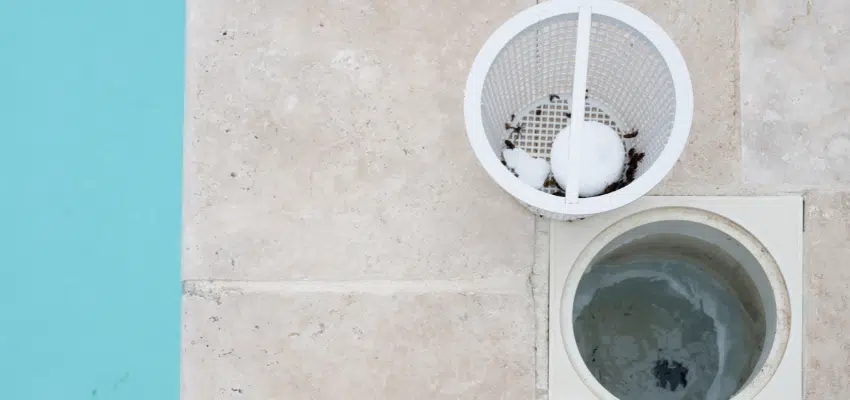
As a result, you can prevent excessive chlorine levels.
If the pump isn’t running when you put the chlorine tablets in skimmer baskets, they’d stay in the system for up to a week. That can result in high chlorine levels that may damage the equipment.
In addition, you must ensure you only use the appropriate number of tablets for every cleanup. If you’re wondering how many chlorine tabs per week is ideal, you must first consider the pool capacity. The general rule of thumb is that for every 10,000 gallons of water in your pool, you’ll need one 3” chlorine tablet. Now, you might be thinking, “What if I’m against the idea of putting chlorine tablets in skimmer baskets?” As luck would have it, you have several viable alternatives.
Where Is The Best Place To Put Chlorine In A Pool Other Than The Skimmer?
In The Pool, Manually
Perhaps the most time-consuming method to administer chlorine is using granular chlorine—the powdered version of chlorine. This method involves sprinkling the powder in the pool manually.
Not many experts would suggest this method since it also has its fair share of risks.
For one, if you sprinkle too much chlorine on a specific area, it may bleach the pool lining or damage the equipment in its vicinity. Hence, not only does it require a lot of time, but it also needs precision.
Its only upside is that it doesn’t involve any equipment, so it’s the cheapest method.
In A Floating Chlorine Dispenser
A floating chlorine dispenser is a device that can float on top of the water. It has a large space at the center where you put a 1” or 3” chlorine tablet. Then, you simply let it float and wait until it dissolves.
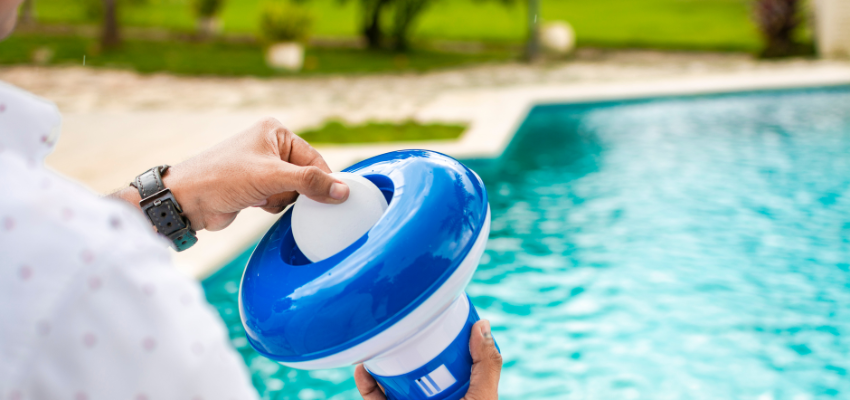
Since there’s less water flow, it takes longer to dissolve than when you put the chlorine tablets in skimmer baskets. In addition, the device can get stuck in various places, like in the ladder or steps.
As a result, it’ll release high concentrations of chlorine in just that one area.
Surprisingly enough, a floating chlorine dispenser is more likely to cause damage than chlorine tablets in skimmer baskets. So while it IS an alternative, it’s not a good one, so take that as you will.
In An Automatic Chlorinator
The best alternative so far to putting chlorine tablets in skimmer baskets is using a chlorinator. It’s a device that can distribute chlorine equally through the entire pool. You just have to load it up with chlorine tablets, adjust the chlorine level depending on the pool’s needs, and wait for the result.
Going Forward
Chlorine is an inherently corrosive and harsh chemical. Unless you can find a non-toxic alternative, it will also pose a threat to your equipment. That’s why it’s not surprising that putting chlorine tablets in skimmer baskets turned out to be risky. At the very least, you now know how to minimize that risk, or if you’re not willing to take any, what alternative you can use that’s much safer. Hopefully, this guide can prevent damage to your equipment that may cost thousands of dollars in repairs or replacement.
(Related: What Exactly is a Floating Pool Skimmer?)
Hire Boca’s Favorite Pool Builders
Excel Pool and Patio Solutions is your trustworthy provider of pool services in Boca Raton. We are experts in pool and patio remodeling and can handle your resurfacing needs as well. Our technicians are vetted and trained for your guaranteed satisfaction. Get to know us by browsing our website or reaching out to us with any questions.
Contact our team today to request a free estimate for pool construction, maintenance, repairs and more.
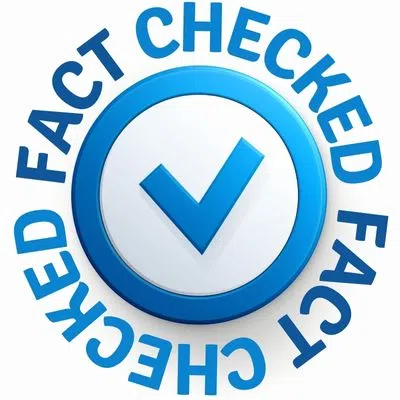
Fact Checked By Experts
This is original content and has been diligently fact checked by our internal team of experts. Discover more about the rigorous editorial standards we uphold for our website here.

About The Author
Christian Cruz is an experienced blogger with a deep passion for the outdoors. He has a fascination with engineering that fuels his research for the Excel Pool & Patio Solutions blog.

